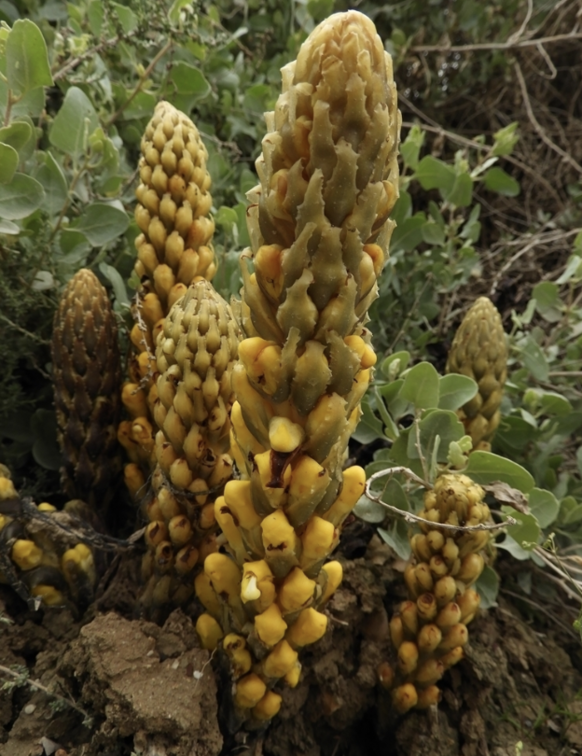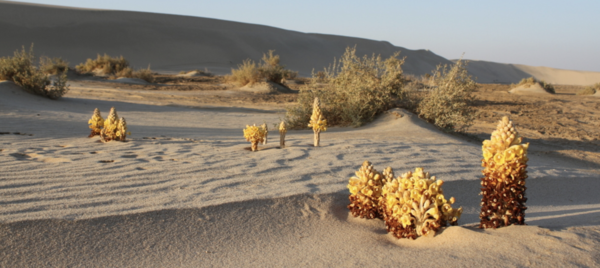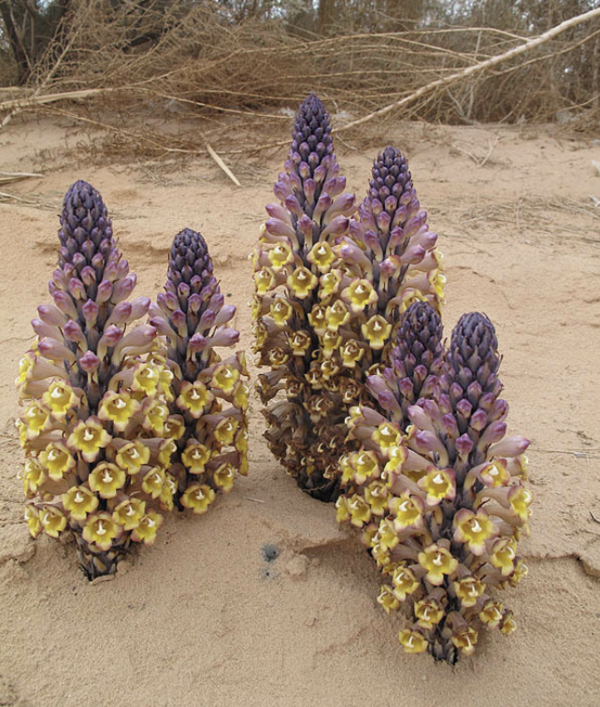Cistanche tubulosa, commonly known as the "Cistanche" or "Desert Ginseng," is a perennial parasitic plant belonging to the Orobanchaceae family. It has a wide distribution across regions of North Africa, the Arabian Peninsula, Pakistan, India, Central Asia, and also in the southern parts of Xinjiang in China. This plant is primarily found in areas with adequate water supply, such as sand dunes and tamarisk thickets, at altitudes of around 1200 meters. Cistanche tubulosa is often parasitic on the roots of Tamarix species, forming a symbiotic relationship with its host plants.
The scientific name of the plant is Cistanche tubulosa (Schenk) Wight. The genus name Cistanche is derived from the Latin word for a type of plant, while the species name tubulosa refers to the tubular shape of its flowers.
In summary, Cistanche tubulosa is classified as follows:
Kingdom: Plantae
Division: Magnoliophyta
Class: Eudicots
Order: Lamiales
Family: Orobanchaceae
Genus: Cistanche
Species: Cistanche tubulosa

Cistanche tubulosa grows to a height of 60–100 cm, with the aerial part reaching 30–35 cm. Its stem is unbranched and cylindrical, with a base diameter of 3–4 cm. The plant features white to pale brownish triangular leaves, which dry to a dark brown color. The plant has a distinct inflorescence in the form of a spike-like flower cluster that measures 12–18 cm in length and 5–6 cm in diameter. The bracts of the flower are lance-shaped or ovate-lanceolate, measuring 2–2.7 cm long and 5–6.5 mm wide, with a soft hair covering along the margins. The flowers are tubular with a funnel-shaped corolla, typically pale white, which turns yellowish-white upon drying. The petals of the flowers are lanceolate to ovate, while the anthers are egg-shaped, and the ovary is elongated and oval.
Cistanche tubulosa is renowned for its medicinal properties in traditional medicine. The plant's dried, fleshy, scaly stem, also known as "Cistanche," is regarded as a potent herb used in treating various conditions. It is considered to have a warm nature and a sweet-salty taste, making it a valuable medicinal resource for promoting kidney function, enhancing sexual vitality, and aiding in digestion.
Kidney Tonic and Aphrodisiac: The herb is most commonly used to tonify the kidneys and improve sexual health. It has been traditionally used as a remedy for erectile dysfunction, premature ejaculation, and other sexual disorders.
Laxative and Digestive Aid: It has a mild laxative effect, often used to relieve constipation and improve digestive function by enhancing bowel movement.
Anti-aging and Immune Support: Recent studies suggest that Cistanche tubulosa has antioxidant properties, which can help delay aging and protect cells from oxidative damage. It also strengthens the immune system by enhancing the body's natural defense mechanisms.

The pharmacologically active components of Cistanche tubulosa are primarily its glycosides, including echinacoside and acteoside. These compounds exhibit a range of biological activities, including antioxidant, anti-inflammatory, and neuroprotective effects. In addition to these glycosides, Cistanche tubulosa contains various alkaloids, flavonoids, and polysaccharides, which contribute to its medicinal benefits.
Echinacoside: Known for its potent antioxidant and anti-inflammatory effects, echinacoside has been studied for its ability to improve cognitive function and combat oxidative stress-related diseases.
Acteoside: This compound possesses neuroprotective and anti-fatigue properties and has shown potential in improving brain function and reducing the symptoms of stress and fatigue.
Cistanche tubulosa thrives in semi-arid and arid regions where it can find host plants to parasitize. It prefers areas with sufficient moisture, typically growing in the sand dunes and tamarisk thickets of Central Asia, North Africa, and parts of China. The plant attaches itself to the roots of Tamarix species, forming a parasitic relationship that enables it to draw nutrients from the host plant, thus surviving in nutrient-poor soils.
The plant blooms between May and June, with its flowers reaching full maturity during the summer months. The fruiting period typically occurs between July and August. The fruit is a capsule that contains numerous small seeds, which are dispersed when the fruit matures. The plant's reproductive cycle is seasonal, with a period of dormancy during the colder months.

Due to the increasing demand for Cistanche tubulosa in traditional medicine, coupled with habitat destruction and overharvesting in certain regions, the plant's population has been steadily declining. In response to this, efforts have been made to cultivate Cistanche tubulosa through sustainable agricultural practices to ensure its continued availability for both medicinal and commercial purposes.
Additionally, conservation programs and regulations have been implemented in various countries to protect the plant’s natural habitat. This includes restrictions on wild harvesting and the promotion of research into the cultivation and propagation of the species.
Cistanche tubulosa is a remarkable plant with a broad array of medicinal benefits, particularly for enhancing sexual health, promoting kidney function, and improving digestion. Its chemical composition, rich in bioactive compounds such as echinacoside and acteoside, supports its therapeutic efficacy. While the plant faces ecological challenges due to overharvesting and habitat loss, efforts to cultivate it sustainably and conserve its natural environment provide hope for its future use. As more research is conducted into its pharmacological properties, Cistanche tubulosa remains an essential part of traditional medicine, offering significant promise for modern therapeutic applications.
animal tags: Orobanchaceae
We created this article in conjunction with AI technology, then made sure it was fact-checked and edited by a Animals Top editor.